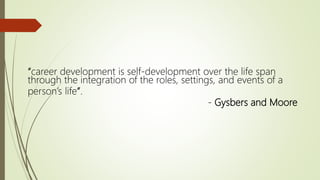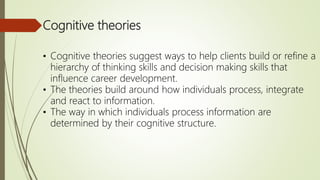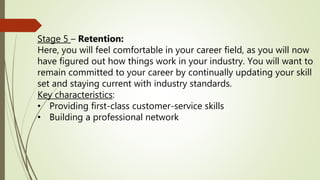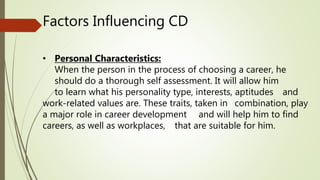The document outlines the multifaceted nature of career development, emphasizing its interaction with psychological, sociological, economic, and cultural factors throughout an individual's life. It describes the objectives, importance, principles, and various theories of career development alongside its stages and influencing factors. Additionally, it highlights the significance of aligning individual goals with organizational objectives to foster employee growth and satisfaction.










































